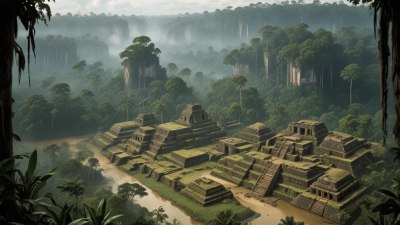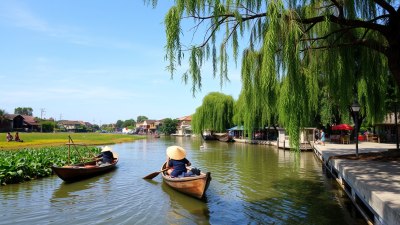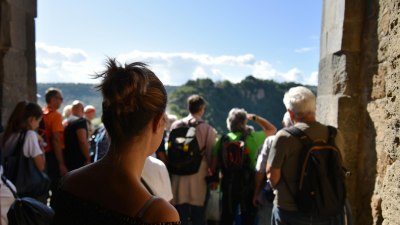Exploring the Lost Civilizations of the Amazon Jungle
Unearth the secrets of ancient civilizations hidden in the Amazon rainforest.

This image was created with the assistance of Freepik
The Amazon jungle, a sprawling expanse of lush greenery and vibrant wildlife, is often seen as a natural wonderland, but beneath its dense canopy lies a history rich with the remnants of ancient civilizations. This article delves into the lost worlds of the Amazon, exploring the evidence, discoveries, and theories surrounding these long-forgotten cultures that once thrived in the heart of this enigmatic landscape.
The Amazon: More Than Just a Jungle
At first glance, the Amazon rainforest appears to be a largely untamed wilderness, teeming with biodiversity. However, archaeological studies have revealed that this region was once home to a multitude of civilizations that shaped its geographical and cultural landscape in significant ways. Researchers now believe that the Amazon was not just a collection of isolated tribes, but rather a complex network of sophisticated societies.
Archaeological Discoveries
In recent decades, advancements in technology, such as LiDAR (Light Detection and Ranging), have revolutionized the way researchers explore hidden structures beneath the forest cover. These high-tech methods have uncovered extensive formations such as road systems, urban centers, and complex earthworks that point to a densely populated pre-Columbian world.
One of the most significant archaeological finds includes the discovery of geoglyphs in the Brazilian state of Acre, which date back to around 3,000 years ago. These massive, geometric earthworks are believed to have served ceremonial functions or perhaps acted as territorial markers. Through the lenses of these discoveries, the perception of the Amazon as a 'virgin forest' is challenged; it is revealed as a landscape deeply influenced by human habitation.
The Role of the Amazonian People
Several indigenous groups played essential roles in the environmental management of the Amazon. Evidence suggests they employed advanced farming techniques, including the creation of terra preta, or 'black earth,' which is an enriched soil that allows for sustainable agriculture in otherwise nutrient-poor regions. This innovative approach not only sustained food production but also transformed the Amazon's ecology, fostering biodiversity that continues to be crucial today.
The construction of sophisticated irrigation and drainage systems further illustrates the technological prowess of these ancient civilizations. The archaeological record shows that these societies were adept at altering the landscape to suit their agricultural needs and survive in the challenging environment of the rainforest.
Major Civilizations of the Amazon
Though much remains unknown, several notable civilizations are recognized for their contributions to the Amazon's history. The Marajoara, for instance, thrived on Marajó Island and is known for its intricate pottery and society that might have included hierarchies and trade networks. Their artifacts suggest a rich cultural life, complete with elaborate burial practices, and they substantially impacted the coastal regions of the Amazon.
Additionally, the Tapajós civilization, known for its construction of large earth mounds, was influential in the central Amazon. The mounds likely served as platforms for residential buildings, evidence of a well-organized society. The extensive trade networks connected these civilizations, allowing them to exchange goods, ideas, and agricultural practices.
Impacts of European Colonization
The arrival of European colonizers in the 16th century marked a devastating turn for the indigenous civilizations of the Amazon. Disease, warfare, and exploitation led to dramatic declines in the population. The once-thriving societies faced severe disruptions that overshadowed their achievements. The history of these civilizations remained largely hidden for centuries, buried under layers of narratives that disregarded the human presence within the jungle.
Modern Perspectives on Lost Civilizations
Today, scholars and archaeologists are re-evaluating the human history of the Amazon. The traditional belief that the rainforest was untouched by civilization is being replaced by a more nuanced understanding of its dynamic relationship with human groups. The lost civilizations are being recognized for their ingenuity in adapting to the environment and their lasting impact on the region.
Research initiatives and collaborations with indigenous communities are key to this renewed scholarship. By combining scientific inquiry with traditional knowledge, a more comprehensive understanding of Amazonian history is emerging. This approach not only seeks to uncover the past but also aims to empower local communities that have preserved cultural wisdom through generations.
Challenges of Preservation
Despite the exciting discoveries being made, the Amazon and its historical sites face significant threats from deforestation, mining, and climate change. These factors jeopardize not only the biodiversity of the region but also the delicate traces of ancient civilizations. The preservation of these archaeological sites is critical, as they hold keys to understanding humanity’s past interactions with nature.
Efforts to conserve the Amazon often highlight the importance of indigenous stewardship, emphasizing that local populations are best positioned to protect the rainforest and its secrets. Integrating modern scientific research with traditional ecological knowledge can lead to sustainable conservation practices that honor the legacy of the lost civilizations.
The Future of Research and Discovery
As technology continues to evolve, the potential for uncovering more about Amazonian civilizations grows. Non-invasive archaeological techniques combined with genetic studies of ancient diets and environmental DNA analysis stand to shed light on the diets, lifestyles, and interconnections of these cultures. Encouragingly, international collaboration is gaining momentum, fostering a shared responsibility in preserving both the ecological and cultural heritage of the Amazon.
In conclusion, the exploration of the lost civilizations of the Amazon jungle represents a journey into understanding the complexities of human societies and their interactions with the environment. As researchers continue to peel back the layers of history, the stories of these civilizations can inform our present and guide us towards a sustainable future that respects both the natural world and its ancient inhabitants.











